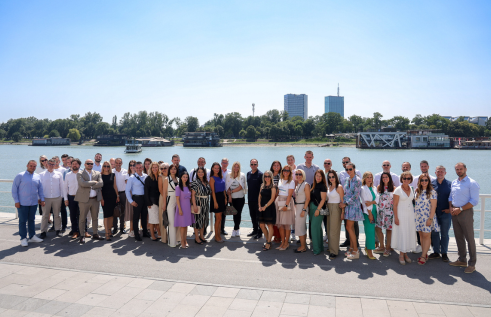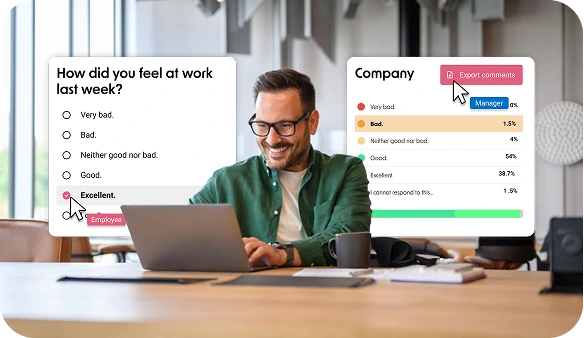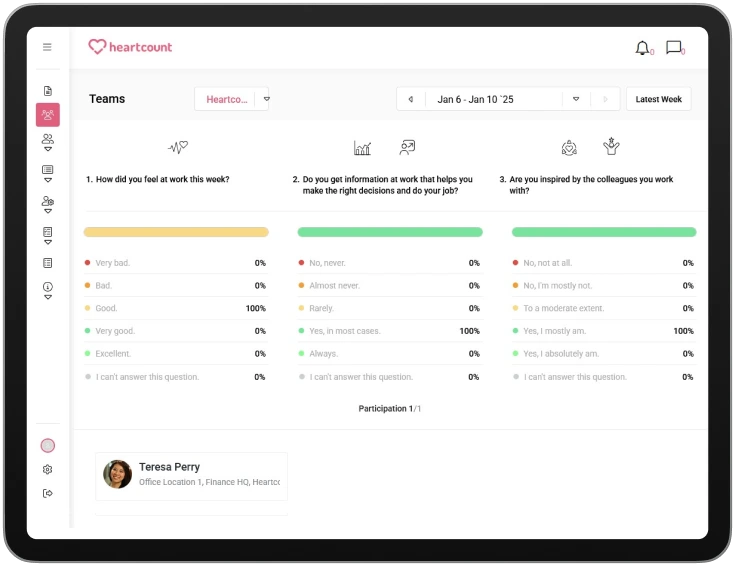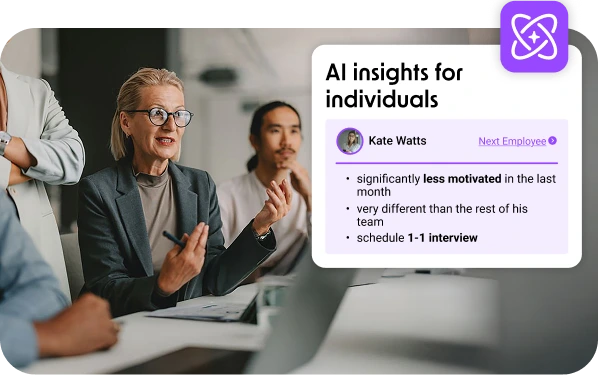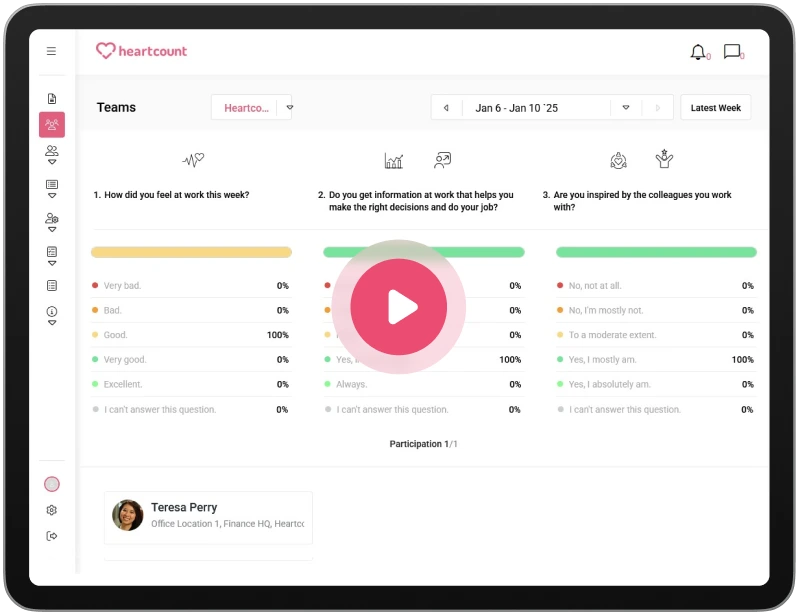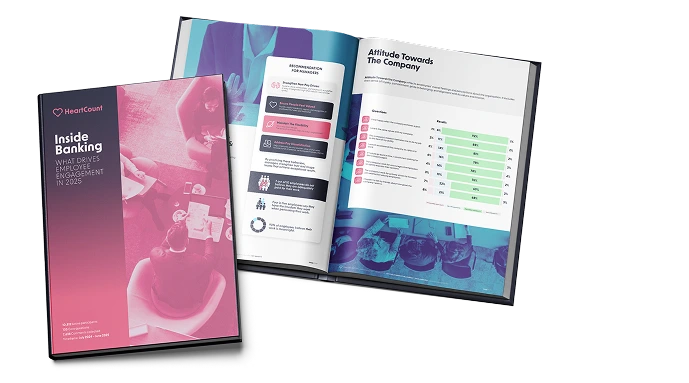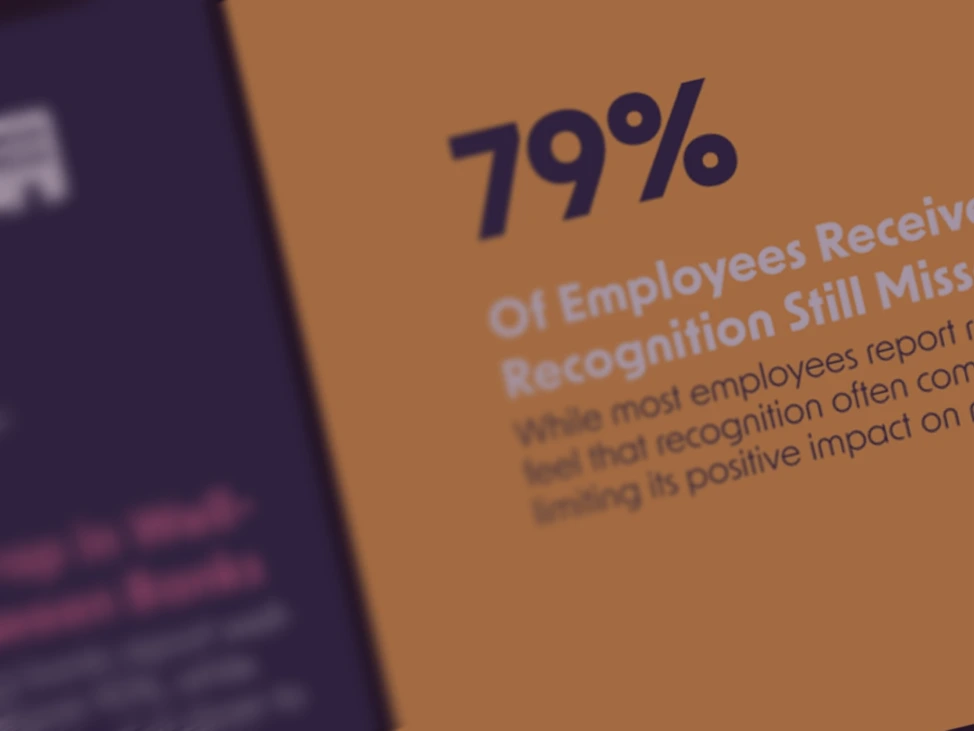Employee Development: Why It Matters and How to Do It Right in 2025

In 2025, employee development isn’t just a nice-to-have — it’s a business imperative. According to LinkedIn’s Workplace Learning Report, 89% of L&D professionals say building employee skills is key to navigating future disruptions. But despite this, many organisations still treat development as a side project, disconnected from performance and retention goals.
That disconnect is costly. Teams that lack learning opportunities are more likely to disengage and churn. On the flip side, companies that prioritise employee development report stronger engagement, higher loyalty, and measurable business growth. At HeartCount, we believe the most successful organisations in 2025 will be the ones that treat employee growth as part of their everyday operating system — not an afterthought.
-
1.What Is Employee Development?
-
2.Why Employee Development Is Crucial for Retention and Performance
-
3.The Latest Trends in Employee Development (2025)
-
4.How to Identify Development Needs Across Your Workforce
-
5.How to Build an Effective Employee Development Plan
-
6.9 Proven Employee Development Ideas That Work
-
7.Examples of Employee Development Plans (Templates & Scenarios)
-
8.Employee Development Checklist for HR & Managers
-
9.Overcoming Challenges in Employee Development
-
10.Final Thoughts: Make Employee Growth a Competitive Advantage
-
11.FAQs About Employee Development
In 2025, employee development isn’t just a nice-to-have — it’s a business imperative. According to LinkedIn’s Workplace Learning Report, 89% of L&D professionals say building employee skills is key to navigating future disruptions. But despite this, many organisations still treat development as a side project, disconnected from performance and retention goals.
That disconnect is costly. Teams that lack learning opportunities are more likely to disengage and churn. On the flip side, companies that prioritise employee development report stronger engagement, higher loyalty, and measurable business growth. At HeartCount, we believe the most successful organisations in 2025 will be the ones that treat employee growth as part of their everyday operating system — not an afterthought.
What Is Employee Development?
In a fast-changing world of work, understanding what employee development is — and why it matters — is more important than ever. It’s no longer optional; it’s a strategic enabler that helps organisations stay competitive, agile, and future-ready. Whether it’s upskilling for new technologies or preparing high-potential employees for leadership, development efforts drive both individual growth and business resilience.
But to do it well, we need to move beyond generic training and get clear on what is employee development in practice — and how it differs from more traditional approaches to learning.
A Simple Definition of Employee Development
A common employee development definition refers to the continuous process of improving an employee’s skills, knowledge, and capabilities in alignment with both their personal career goals and the company’s strategic objectives. Unlike basic onboarding or compliance training, development is long-term, personalised, and future-focused.
In practice, employee development can take many forms — from formal learning programmes and mentorship to on-the-job challenges and feedback loops. It’s not about ticking boxes. It’s about building a workforce that is agile, confident, and prepared for what comes next.
Employee Development vs. Training: What’s the Difference?
Although often used interchangeably, employee development and training are not the same thing.
- Training is typically short-term, role-specific, and focused on immediate skill application. Think: learning how to use a new CRM.
- Development is broader, long-term, and strategic. It’s about growing employees into their next role — whether that’s a leadership position or a lateral career move.
Put simply: training helps someone perform their current role better. Development helps them grow into what’s next.
Real-World Examples of Development in Action
To bring the definition to life, here are a few examples of what employee development looks like across different roles:
- A mid-level engineer taking on a stretch assignment to lead a cross-functional project
- A customer service rep enrolled in a soft-skill workshop on emotional intelligence and resilience
- A new manager receiving ongoing coaching and participating in 1:1s to refine their leadership style
- A marketing specialist accessing a learning stipend to explore data analytics certifications
These are more than isolated learning events. They’re part of a broader employee development plan that reflects both the organisation’s future needs and the individual’s growth ambitions.
Why Employee Development Is Crucial for Retention and Performance
Employee development isn’t just about personal growth — it’s one of the most powerful levers companies can use to boost retention, engagement, and long-term performance. In today’s job market, where skills gaps are widening and top talent is more mobile than ever, employees expect more than just a paycheck. They want a clear path forward.
Let’s break down exactly how strategic development efforts impact both companies and their people.
Benefits for Companies (Productivity, Culture, Profitability)
Companies that prioritise employee growth tend to see improvements across the board — from productivity and adaptability to overall culture and financial results. Development-focused organisations often experience stronger engagement, greater innovation, and lower attrition.
Supporting internal growth also contributes directly to long-term business success. Investing in employee development has been shown to generate a clear return on engagement and plays a key role in improving both performance and retention.
Benefits for Employees (Growth, Engagement, Loyalty)
When employees are given space to grow, they’re more motivated to contribute and more likely to stick around. Development signals trust, opportunity, and long-term thinking — which fosters deeper emotional commitment.
Access to growth opportunities is frequently cited as one of the top reasons employees choose to stay. In environments where feedback loops, development check-ins, and internal mobility are standard, people feel more empowered and less likely to disengage. This directly strengthens both engagement and retention.
What the Data Says: Stats That Prove the ROI
Still questioning the value of development? The numbers speak for themselves.
Employees with access to career growth opportunities are significantly more likely to stay. In fact, a report by ATD found that retention rates are 34% higher at companies that invest in employee development — a clear indication that upskilling and support reduce churn.
It’s not just about staying longer. Development also drives emotional commitment. A LinkedIn Learning survey revealed that 94% of employees would remain at a company longer if it invested in their learning and career growth.
And the business outcomes are just as compelling. According to Gallup research, highly engaged teams — those that receive regular feedback, coaching, and development support — deliver 21% greater profitability than disengaged peers.
The data is clear: when companies support continuous growth, both people and profits thrive.
COLLECT
The Latest Trends in Employee Development (2025)
Employee development in 2025 looks very different from a decade ago. One-size-fits-all training is no longer enough — modern organisations are shifting toward more agile, personalised, and tech-enabled approaches to growth. The importance of employee development has never been clearer, as these strategies directly impact retention, performance, and long-term business agility. These aren’t just passing fads. They reflect deeper changes in how people learn, work, and build careers.
Here’s what’s shaping development strategies this year.
Personalized Learning Paths and Skill Gaps
With career paths becoming less linear, employees want learning that’s tailored to their unique goals and current skill levels. Personalised development plans — built around data from surveys, performance reviews, and self-assessments — are helping organisations close both immediate skill gaps and long-term capability needs.
This approach empowers employees to learn at their own pace, while still aligning with business priorities.
Career Lattices vs. Career Ladders
Instead of climbing a single ladder, employees today are exploring career lattices — lateral moves, cross-functional projects, and rotational roles that provide broader experience. These options are especially valuable for retaining high performers who aren’t chasing traditional promotion tracks.
Creating space for lateral growth not only boosts engagement but helps build a more resilient, multi-skilled workforce.
Social Learning and Microlearning
Learning is becoming more social, informal, and on-demand. Peer coaching, internal knowledge sharing, and bite-sized microlearning sessions are now core components of development strategies. Rather than waiting for annual training blocks, employees are accessing learning “in the flow of work” — when and where they need it.
Short-form content, collaborative platforms, and internal communities are helping make learning continuous rather than episodic.
AI-Powered Development Tools and Nudges
AI is playing a growing role in identifying skill gaps, recommending development paths, and even sending timely nudges to keep employees on track. From intelligent learning platforms to AI-driven coaching assistants, these tools offer highly personalised support without placing additional burden on managers.
More importantly, they enable scalable development at every level — not just for top-tier talent. Teams using data-informed nudges to guide behaviour change are already seeing measurable gains in performance and engagement.
How to Identify Development Needs Across Your Workforce
Before you can build an effective employee development plan, you need to understand where the gaps are — not just in technical skills, but in leadership readiness, communication habits, and growth potential. Recognising the importance of employee development means going beyond surface-level metrics and uncovering the real drivers of growth and engagement. The challenge? These needs aren’t always visible in performance data alone.
Modern organisations are turning to smarter, more continuous ways to diagnose development priorities.
Using Pulse Surveys, Feedback & 1:1s to Diagnose Gaps
One of the most effective ways to uncover hidden development needs is through regular, structured feedback. Pulse surveys, employee sentiment data, and manager 1:1s can reveal patterns that static evaluations miss — like declining confidence, unclear growth expectations, or lack of role clarity.
Platforms like HeartCount make it easy to gather real-time insights, spot signals of disengagement, and connect them to underlying development blockers. By combining employee input with behavioural trends, HR and team leads can act earlier and more precisely.
Mapping Skills to Future Roles
Identifying which skills matter most in the future — not just the present — is a key part of development planning. This means looking beyond current job descriptions and toward evolving business needs: automation, new market demands, digital transformation, and so on.
Skills frameworks, team capability matrices, and succession planning tools can help teams evaluate how well employees are positioned for future challenges — and where investment is needed now.
Spotting Leadership Potential Early
Not every high performer wants to become a manager — but many do, and not all of them get noticed in time. Proactively identifying employees with leadership potential allows organisations to start early with targeted development — whether through mentorship, coaching, or exposure to cross-functional initiatives.
Tracking soft-skill indicators, feedback trends, and collaboration behaviours can help reveal who’s ready to step up — even before they raise their hand.
How to Build an Effective Employee Development Plan
A good employee development plan isn’t just a checklist of courses. It’s a living framework that aligns personal aspirations with organisational goals, provides measurable direction, and supports real growth over time. Done right, it helps reduce churn, strengthen engagement, and build internal mobility.
Here’s how to get it right — from structure to execution.
Align with Business and Employee Goals
The most effective development plans are co-created — not imposed. That means aligning what the business needs (e.g. future leadership, digital upskilling) with what the employee values (career direction, skill mastery, new challenges).
When development plans support both strategic objectives and individual motivation, they become a lever for deeper commitment — and a practical way to reduce employee turnover.
Set Clear, Measurable Development Objectives
Vague goals like “improve communication” or “learn data analysis” aren’t enough. Strong development plans include specific, measurable objectives — ideally using SMART goal frameworks tied to regular check-ins and outcomes. These checkpoints also create space to revisit expectations and adjust course if needed.
Include Both Hard and Soft Skill Growth
Technical ability gets people in the door — but soft skills often determine long-term success. Development plans should balance hard skill training (e.g. coding, analytics) with behavioural growth (e.g. empathy, leadership, resilience).
Tracking soft-skill progress may feel more abstract, but regular conversations, 360 feedback, and even team sentiment trends can offer tangible signals. For example, the Employee Engagement Index can help surface how confident and supported employees feel as they develop.
Use Templates or Toolkits to Accelerate Planning
If creating plans from scratch feels overwhelming, toolkits and planning templates can save time — and ensure consistency across teams. Whether you’re designing a growth path for first-time managers or mapping technical upskilling for a product team, a structured approach makes it easier to track progress and iterate.
HeartCount users can seamlessly connect engagement insights with employee development planning, empowering managers to support their teams and make informed decisions without extra effort.
UNDERSTAND
9 Proven Employee Development Ideas That Work
You don’t need massive budgets or year-long programmes to support meaningful employee development. Often, it’s the small, consistent opportunities — baked into everyday work — that make the biggest difference. These practical approaches can serve as building blocks for personalised employee development plan examples tailored to different roles, goals, and growth paths.
Here are nine proven employee development ideas that companies are using to grow talent from within:
1. Peer Mentoring and Shadowing Programs
Pairing employees with experienced colleagues helps accelerate learning and builds a sense of belonging. Shadowing also gives newer team members exposure to different roles, workflows, and leadership styles — all without leaving their current position.
2. Stretch Assignments and Lateral Moves
Assigning someone a project outside their usual scope — or offering a lateral shift into a different function — encourages problem-solving, confidence, and cross-functional awareness. These moves are low-risk but high-growth for both the employee and the team.
3. Manager-Led Coaching and Feedback Loops
Managers play a critical role in reinforcing learning and spotting growth opportunities. When coaching is embedded into weekly 1:1s or project reviews, it becomes a habit — not an event.
Creating a strong feedback loop within teams also encourages continuous dialogue around strengths, blind spots, and development priorities.
4. Skill-Building Workshops and Certifications
Short, focused workshops — virtual or in-person — offer space for employees to dive deep into a single topic. When paired with optional certifications, these sessions give tangible progress markers that boost both confidence and CVs.
5. Career Pathing and Growth Conversations
A simple career conversation every quarter can help employees feel seen, valued, and aligned. Whether they’re aiming for a promotion or exploring something new, clarity around what’s possible — and how to get there — is a powerful motivator.
6. Rotation or Secondment Opportunities
Offering short-term assignments in other departments or locations gives employees fresh perspectives and a wider view of the organisation. It’s also a great way to develop future generalists and leadership candidates.
7. Self-Directed Learning Stipends
Giving employees a budget for courses, books, or events puts ownership in their hands. It’s a signal of trust — and a flexible, scalable way to support personalised growth.
8. Soft-Skill Boosters: Empathy, Leadership, Resilience
Don’t underestimate the impact of interpersonal skills. Workshops, team discussions, or peer-led sessions on topics like emotional intelligence and resilience can be game-changers — especially for future managers.
9. Use of Data-Driven Nudges and Milestone Tracking
Sometimes, the biggest blocker to development is momentum. Tools that provide intelligent nudges — such as reminders to revisit goals, reflect on feedback, or check in with a manager — help employees stay on track without pressure.
Teams using platforms like HeartCount can also track engagement signals and development progress in one place, making it easier to spot wins and course-correct where needed.
Examples of Employee Development Plans (Templates & Scenarios)
Knowing what to include in a development plan is one thing — seeing how it plays out in real scenarios makes it much easier to apply. Here are three sample employee development plans tailored to different roles and growth goals.
Example: New Manager Development Path
Scenario: An individual contributor has recently been promoted to a team lead role.
Goals:
- Build foundational leadership skills
- Improve communication in 1:1s and team meetings
- Learn how to delegate effectively
Plan Elements:
- Enrol in a leadership fundamentals workshop
- Schedule monthly coaching sessions with their own manager
- Use feedback data and pulse check-ins to track team sentiment over time
- Participate in peer forums to discuss real-world challenges with other new managers
This plan balances formal learning with hands-on coaching and real-time feedback, helping build confidence while avoiding common first-time manager pitfalls.
Example: Upskilling a Mid-Level Engineer
Scenario: A backend engineer wants to grow into a more strategic, cross-functional role.
Goals:
- Learn basic product management and stakeholder communication
- Gain visibility into front-end development and UI thinking
- Take ownership of a small cross-team initiative
Plan Elements:
- Attend cross-functional workshops on product thinking and business alignment
- Shadow a senior engineer working closely with product leads
- Lead a small but strategic tech initiative with clear delivery goals
- Use HeartCount’s pulse surveys to reflect on collaboration challenges and self-evaluate soft-skill growth
This development plan blends technical upskilling with exposure to broader organisational dynamics, building a well-rounded engineer.
Example: Career Pathing for High Potentials
Scenario: A high-performing employee expresses interest in future leadership opportunities but isn’t yet in a formal track.
Goals:
- Explore leadership as a long-term path
- Strengthen influence and cross-functional collaboration
- Take on more strategic thinking without changing roles immediately
Plan Elements:
- Join a cross-departmental task force to broaden scope
- Receive regular mentoring from a senior leader
- Facilitate one team-level initiative (e.g. retrospective, planning session)
- Track development milestones and engagement signals using internal tools
By offering stretch opportunities and strategic coaching, this plan supports long-term potential — without forcing a promotion prematurely.
ACT
Employee Development Checklist for HR & Managers
Even the best intentions can fall flat without structure. This checklist is designed to help HR leaders and people managers keep development consistent, strategic, and measurable — no matter the size of the team.
Assess Needs Regularly (Survey + Review Data)
Use pulse surveys, feedback forms, and engagement metrics to uncover where development gaps exist. Look at both skill-based and sentiment-based signals to spot blind spots early. Consistent data review helps prioritise efforts and track momentum over time.
Build Personalized Plans
Avoid cookie-cutter templates. Tailor development plans based on employee strengths, aspirations, and readiness. Co-create the plan with each individual, linking their goals to broader team or company objectives.
Track Progress Quarterly
Development shouldn’t be left to annual reviews. Set up quarterly checkpoints to reflect on progress, adjust focus, and celebrate wins. A simple status update or reflection prompt can go a long way in keeping momentum alive.
Encourage Feedback Loops
Make feedback a two-way conversation — not just something given top-down. Use 1:1s, team reflections, or peer coaching to build continuous learning into the flow of work. This also helps uncover blockers before they become disengagement triggers.
Celebrate Milestones and Wins
Employee recognition matters. Whether it’s completing a course, leading a successful project, or showing clear growth in a soft skill — take time to acknowledge progress. Small celebrations build motivation and signal that development is valued.
Overcoming Challenges in Employee Development
Even the most committed HR teams run into roadblocks when trying to implement employee development consistently. From limited resources to misaligned expectations, these challenges can derail progress — unless they’re addressed head-on.
Here’s how to navigate the most common obstacles.
Budget and Time Constraints
Training budgets often get slashed first, and development is frequently seen as a “nice-to-have.” But impactful growth doesn’t always require external courses or expensive programs.
Start with what’s already available: internal mentorship, stretch assignments, and peer coaching are low-cost, high-impact options. And when time is tight, microlearning formats and async resources can keep momentum going without disrupting workflows.
Gaining Manager Buy-In
Without active support from managers, even the best development strategy will struggle to take off. One way to build buy-in is to link development efforts directly to team-level performance and retention — outcomes managers care deeply about.
Equip them with simple templates, conversation guides, and engagement data they can act on. When managers feel ownership (not just obligation), they’re more likely to follow through.
Tracking ROI and Progress Without Extra Tools
Many teams abandon development initiatives because they can’t easily measure progress — or justify the investment to leadership. That’s where data-backed tracking becomes essential.
Using platforms like HeartCount, organisations can connect development efforts to real-time engagement signals, behavioural insights, and retention metrics — without adding manual work. This makes it easier to show what’s working, optimize what’s not, and keep development visible at the leadership level.
Final Thoughts: Make Employee Growth a Competitive Advantage
Employee development isn’t just an HR initiative — it’s a strategic differentiator. In 2025, the companies that will attract, retain, and elevate top talent are those that treat growth as a daily practice, not an annual event.
Align Growth with Culture and Strategy
Development isn’t something that happens in isolation. It works best when it’s part of your culture — embedded into how managers lead, how feedback is shared, and how goals are set. When employees see that growth is truly supported, they show up differently: more curious, more motivated, more committed.
Small Consistent Steps > Big One-Off Trainings
The best development doesn’t always come from formal training. What matters is consistency. A 15-minute coaching conversation every week is often more impactful than a full-day seminar once a year. When learning becomes part of the rhythm of work, it drives real change.
Why Development Is the Future of Retention
Employees stay where they can grow. They leave when they feel stuck. By investing in development — not just for high potentials, but across the board — you’re not only building skills, you’re building trust. And in a talent market that’s moving faster than ever, trust is your biggest asset.
If you’re ready to turn development into a strategic advantage, it starts with listening, acting on feedback, and building growth into the everyday employee experience. With the right tools and mindset, it’s not only possible — it’s scalable.
FAQs About Employee Development
What Is an Employee Development Plan?
An employee development plan is a structured framework that outlines an individual’s career goals, the skills they need to achieve them, and the steps they’ll take along the way. It often includes timelines, milestones, and regular check-ins between the employee and manager.
Why Is Employee Development Important in 2025?
In 2025, continuous learning and adaptability are essential for staying competitive. Employee development not only helps people grow professionally, but also increases retention, engagement, and business performance — especially in fast-changing industries.
How Do I Start an Employee Development Program?
Begin by assessing development needs across your team through surveys, feedback, and performance data. Then, co-create personalised development plans aligned with both employee goals and business strategy. Focus on small, consistent actions supported by regular check-ins.
What Are the 4 Stages of Employee Development?
The four stages typically include an initial onboarding phase, followed by skill-building and confidence in the role. After that comes a period of expanded responsibility and challenges, eventually leading to strategic impact or leadership within the organisation.
What Are the Best Tools for Employee Development?
The best tools are those that help identify needs, track progress, and support ongoing feedback. These can include pulse survey platforms, skill tracking dashboards, learning management systems (LMS), and tools that integrate development with engagement insights.




